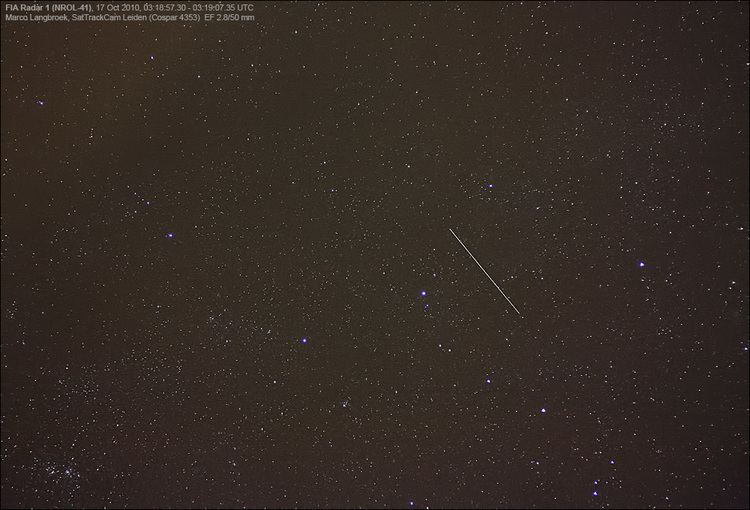 | ||
Future Imagery Architecture (FIA) was a program to design a new generation of optical and radar imaging US reconnaissance satellites for the National Reconnaissance Office (NRO). In 2005 NRO director Donald Kerr recommended the project's termination, and the optical component of the program was finally cancelled in September 2005 by Director of National Intelligence John Negroponte. FIA has been called by The New York Times "perhaps the most spectacular and expensive failure in the 50-year history of American spy satellite projects." Despite the optical component's cancellation, the radar component, known as Topaz, has continued, with four satellites in orbit as of February 2016.
Contents
History
In 1999 the development contract for FIA was awarded to a Boeing team, which underbid Lockheed Martin's competing proposal by about US$ 1 billion (inflation adjusted US$ 1.44 billion in 2016). By 2005, an estimated US$ 10 billion had been spent by the US government on FIA, including Boeing's accumulated cost overrun of US$ 4 to 5 billion, and it was estimated to have an accumulated cost of US$25 billion over the ensuing twenty years. In September 2005 the contract for the electro-optical satellites was shifted to Lockheed Martin because of the cost overruns and delays of the delivery date. Lockheed was asked to restart production of KH-11 Kennan satellite system with new upgrades. The contract for the imaging radar satellite remained with Boeing. In September 2010 NRO director Bruce Carlson stated that while most NRO "(...) programs are operating on schedule and on cost (...)", one program is "(...) 700 percent over in schedule and 300 percent over in budget".
The exact scope and mission of FIA are classified, although the head of the NRO said in 2001 that the project would focus on creating smaller and lighter satellites. Some industry experts believe that a key objective is to make the satellites more difficult to attack, possibly by placing them in higher orbits. Because of the large size of the program, as well as number of workers involved, some experts have compared it to the 1940s Manhattan Project.
In 2012 NRO donated two sophisticated but unneeded space telescopes, reportedly built for FIA, to NASA for use in astronomy.
Launches
The first operational FIA Radar satellite, USA-215 or NROL-41, was launched on 21 September 2010. It is in a retrograde 1100 x 1105 km orbit inclined by 123 degrees, an orbital configuration indicating it is a SAR satellite. On 3 April 2012, a second satellite, USA-234 or NROL-25, was launched into a similar orbit.
The earlier USA-193 satellite, launched in 2006, is believed to have been a technology demonstration satellite intended to test and develop systems for the FIA radar programme. However, it failed immediately after launch, and was subsequently destroyed by a missile.
Successor program
USA-224, launched on 20 January 2011, is believed to be the first of the large post-FIA optical reconnaissance satellites built by Lockheed.
The failed FIA program is to be succeeded by the Next Generation Electro-Optical (NGEO) program. NGEO is intended as a lower-risk modular system, which is capable of being modified incrementally over its lifetime.
